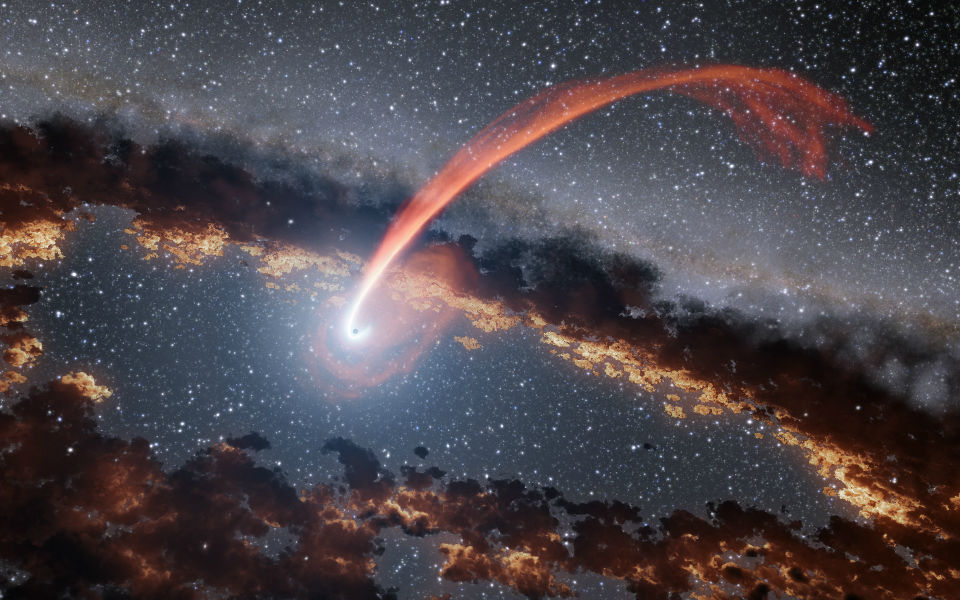Washington, May 3: NASA has said that it successfully demonstrated a new nuclear reactor power system that could enable crewed missions to the Moon, Mars and destinations beyond.
NASA announced the results of the demonstration, called the Kilopower Reactor Using Stirling Technology (KRUSTY) experiment on Wednesday at its Glenn Research Center in Cleveland.
The Kilopower experiment was conducted at the US Department of Energy's National Nuclear Security Administration's Nevada National Security Site from November 2017 through March.
Such a demonstration could pave the way for future Kilopower systems that power human outposts on the Moon and Mars, NASA said in a statement.
"Safe, efficient and plentiful energy will be the key to future robotic and human exploration," said Jim Reuter of NASA's Space Technology Mission Directorate in Washington.
"I expect the Kilopower project to be an essential part of lunar and Mars power architectures as they evolve," Reuter said.
Kilopower is a small, lightweight fission power system capable of providing up to 10 kilowatts of electrical power - enough to run several average households - continuously for at least 10 years.
Four Kilopower units would provide enough power to establish an outpost.
The pioneering power system is ideal for the Moon, where power generation from sunlight is difficult because lunar nights are equivalent to 14 days on Earth, said Marc Gibson, lead Kilopower engineer at Glenn.
"Kilopower gives us the ability to do much higher power missions, and to explore the shadowed craters of the Moon," said Gibson.
"When we start sending astronauts for long stays on the Moon and to other planets, that's going to require a new class of power that we've never needed before."
The prototype power system uses a solid, cast uranium-235 reactor core, about the size of a paper towel roll.
Passive sodium heat pipes transfer reactor heat to high-efficiency Stirling engines, which convert the heat to electricity.
The purpose of the recent experiment in Nevada was twofold: to demonstrate that the system can create electricity with fission power, and to show the system is stable and safe no matter what environment it encounters, said David Poston of National Nuclear Security Administration's Los Alamos National Laboratory.
"We threw everything we could at this reactor, in terms of nominal and off-normal operating scenarios and KRUSTY passed with flying colours," said Poston.
Let the Truth be known. If you read VB and like VB, please be a VB Supporter and Help us deliver the Truth to one and all.
Mumbai (PTI): The rupee plunged 9 paise to a record low of 90.87 against the US dollar in early trade on Tuesday, weighed down by sustained FII outflows and no breakthrough in the India-US trade deal.
However, a weaker greenback and a decline in global crude oil prices capped further losses in the domestic unit, according to forex traders.
At the interbank foreign exchange, the rupee opened at its all-time low of 90.87 against the US dollar, down 9 paise from its previous close, and traded in a narrow range of 90.77- 90.87 in early trade.
ALSO READ: Rupee falls 9 paise to all-time low of 90.58 against US dollar in early trade
The rupee on Monday settled at a new all-time low of 90.78 against the US dollar, registering a loss of 29 paise over its previous close, weighed down by uncertainty over an India-US trade deal and persistent foreign fund outflows.
"The US-India trade deal still seems to be off by a distance with the Commerce Secretary saying the first phase will be signed before the end of the year and news that we are closest to the deal being signed. The uncertainty has clouded the recovery on the USD/INR pair as the rupee opened lower with dollar buying happening every day," Anil Kumar Bhansali, Head of Treasury and Executive Director, Finrex Treasury Advisors LLP, said.
Even a reduction in trade deficit on Monday could not bring about a recovery in the rupee with Foreign Institutional Investors (FII) outflows continuing, he added
According to the latest government data released on Monday, India's trade deficit narrowed to a five-month low of USD 24.53 billion in November, as exports rebounded by 19.37 per cent to a six-month high of USD 38.13 billion after contracting in October, driven by higher shipments of engineering and electronics goods.
At the same time, the country's imports dipped by 1.88 per cent to USD 62.66 billion due to a fall in the inbound shipments of gold, crude oil, coal, and coke.
FIIs sold equities worth Rs 1,468.32 crore on Monday, according to exchange data.
Also, wholesale price inflation stayed in the negative for the second consecutive month in November at (-) 0.32 per cent, even though there was an uptick in prices of food articles like pulses and vegetables on a month-on-month basis, government data showed on Monday.
Wholesale Price Index (WPI)-based inflation was at (-) 1.21 per cent in October and 2.16 per cent in November last year.
Meanwhile, the dollar index, which gauges the greenback's strength against a basket of six currencies, was trading 0.03 per cent lower at 98.27.
Brent crude, the global oil benchmark, was trading 0.61 per cent lower at USD 60.19 per barrel in futures trade.
On the domestic equity market front, the 30-share benchmark index, Sensex, declined 363.92 points to 84,849.44 in early trade while the Nifty was down 106.65 points to 25,920.65.





